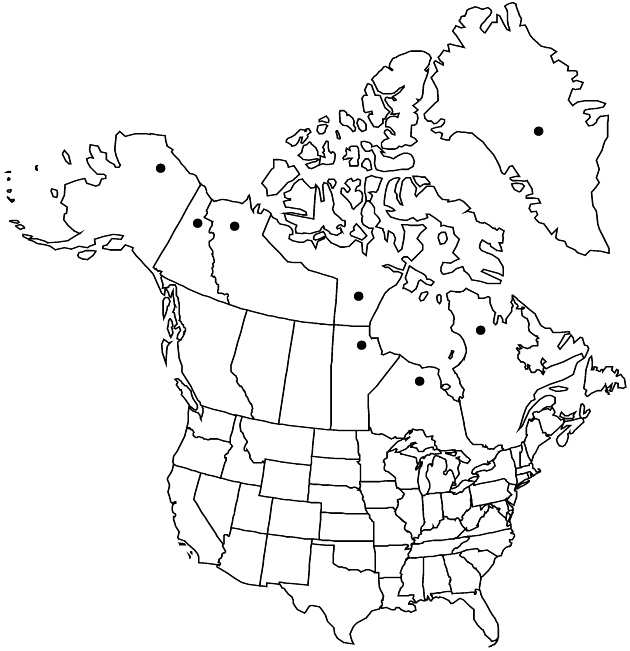Tripleurospermum maritimum subsp. phaeocephalum
Acta Bot. Fenn. 75: 9. 1967.
Common names: Seashore or wild chamomile matricaire à capitules brunâtres
Basionym: Matricaria inodora var. phaeocephala Ruprecht Fl. Samojed. Cisural., 42. 1845
Synonyms: Matricaria ambigua (Ledebour) Krylov Matricaria maritima subsp. phaeocephala (Ruprecht) Rauschert Matricaria maritima var. phaeocephala (Ruprecht) Rauschert Tripleurospermum hookeri (Ruprecht) Pobedimova Tripleurospermum phaeocephalum
Phyllaries broadly triangular, scarious margins blackish brown, 0.4–1 mm wide. Cypselae: resin-gland lengths usually little more than twice widths. 2n = 18.
Phenology: Flowering Jul–Oct.
Habitat: Low Arctic seashores and beaches (near high tide strand line), moist to moderately well-drained areas, gravel, sand, moss
Elevation: 0–50 m
Distribution

Greenland, Man., N.W.T., Nunavut, Ont., Que., Yukon, Alaska, arctic Eurasia
Discussion
Subspecies phaeocephalum occurs along the low Arctic shore (both continental and insular) from Alaska to Quebec; it does not penetrate north into the Canadian Arctic Archipelago; it does not reach Labrador; it is present in Greenland. If treated as a species, the name T. hookeri Schultz-Bipontinus has priority (N. N. Tzvelev 2002b).
Selected References
None.
Lower Taxa
None.
... more about "Tripleurospermum maritimum subsp. phaeocephalum"
elongate +
rugose +
roughened +
introrse +
connate +
truncate +
mucronate;obtuse +
scarious +
ovate +
hirsute +
papillate +
absent +
corymbiform +
continuous +
decurrent +
lobed;oblong +
stigmatic +
absent +
absent +
lacking +
dimorphic +
2.5 cm25 mm <br />0.025 m <br /> (?) +
staminate +
straight +
distinct +
proximal +
1;5 +
bisexual +
dispersed +
Low Arctic seashores and beaches (near high tide strand line), moist to moderately well-drained areas, gravel, sand, moss +
singly +
indeterminate +
10;50 +
surrounding +
hemispheric;patelliform +
oblong +
alternate +
deltate +
blackish brown +
lobed +
scarious +
2-carpellate +
inferior +
attached +
anatropous +
persistent +
falling +
absent +
tough +
thick +
absent +
connate +
persistent +
distinct +
herbaceous +
falling +
unequal +
Acta Bot. Fenn. +
1967 +
pistillate +
absent +
fertile +
epaleate +
convex;conic +
fibrous +
exalbuminous +
modifed +
2;5 +
alternate +
branched +
procumbent +
ascending +
2-branched +
glabrous +
papillate +
Tripleurospermum maritimum subsp. phaeocephalum +
Tripleurospermum maritimum +
subspecies +
campanulate +
cylindric +
cylindric +
fleshy +
perennial +